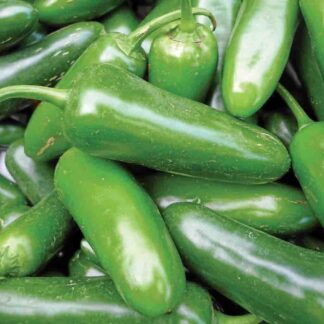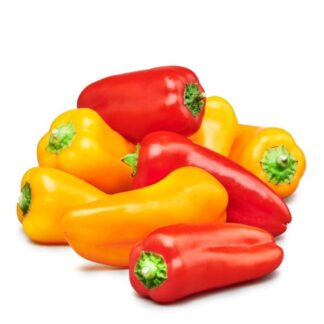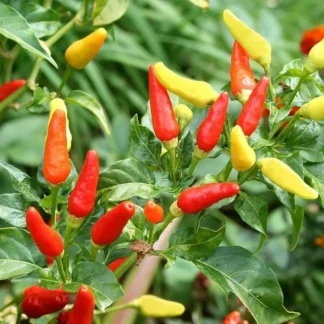Description
How To Plant
Planting in the Garden:
- Because peas are members of the legume family of plants, they can benefit from an application of a soil inoculant designed for beans and peas, prior to planting. The inoculant will enable the plants to take nitrogen from the air to use as fertilizer, which can increase crop yield and quality.
- For optimum flavor, grow in cool weather.
- Support shorter peas on small stakes or a pea fence. Taller peas can be supported with a tower or trellis netting. Set supports for vining varieties prior to planting.
- Sow 2 inches apart in double rows spaced 6 inches apart with 24 inches between each set of rows.
How To Care
- Protect spring plantings with floating row covers to keep flea beetles away.
- Keep plants well watered during dry periods to promote rapid, uninterrupted growth. They do not perform well in overly wet conditions.
- Monitor for pests and diseases.
Tips
- To determine when to pick shell peas, check the pods by eye and feel. If the pea pod is round, has a nice sheen, and is bright green, it is ready. If the seeds have made ridges on the pod and the pods are dull green, it is past prime.
- You can pick snap and snow peas at any time but are tastiest when the pods still have some play around the peas when you squeeze the pods.
- Pick snow peas before the peas start to enlarge.
- If harvest exceeds immediate fresh use, you can freeze peas immediately after harvest to retain rich flavor. Blanch peas for two minutes in boiling water, drain, and then plunge into ice cold water for another two minutes. Drain again and loosely pack the peas into plastic freezer bags or containers. Use within 9 months for best quality.
- Peas can also be dried in a dehydrator and stored in a sealed canister for use in soups and stews.
Common Pests and Diseases
Common Pests:
- Aphids: Greenish, red, black or peach colored sucking insects can spread disease as they feed on the undersides of leaves. They leave a sticky residue on foliage that attracts ants. TBK Nursery Recommends: Introduce or attract natural predators into your garden such as lady beetles and wasps which feed on aphids. You can also wash them off with a strong spray, or use an insecticidal soap.
- Bean Leaf Beetles: These reddish to yellowish-brown beetles with three black spots on each wing cover consume mostly young leaves and the outer wall of the pods. TBK Nursery Recommends: Handpick. Remove plant debris. Rotate crops with plants in a different plant family.
- Leafminers: These insects bore just under the leaf surface causing irregular serpentine lines. The larvae are yellow cylindrical maggots and the adults are small black and yellow flies. They do not usually kill plants, but disfigure the foliage. TBK Nursery Recommends: Remove affected foliage.
- Pea Leaf Weevil: Grayish brown and about 1/5 inches long. Chew semi-circular notches on the margins of leaves. Severe infestation can result in young plants being chewed off at ground level. TBK Nursery Recommends: Protect seedlings with row covers. Once the plants are past the 6 leaf stage, plants can normally grow out of any serious damage.
- Pea Moth: Larvae are tiny and found in pea pods. They feed within the pods on developing peas. TBK Nursery Recommends: Hand pick larvae and remove the damaged pods.
Common Diseases:
- Fusarium Wilt: This fungal disease causes yellowing and stunting of older plants and yellowing, stunting and death to seedlings. The plant will exhibit signs of wilting frequently and the lower leaves turn yellow and dry up. TBK Nursery Recommends: Long crop rotations. Cleaning trellises and stakes by removing debris to avoid spreading the spores to a new area. Try to plant resistant varieties.
- Pea Enation Mosaic Virus: This virus causes the plant to develop mosaic and chlorotic vein flecking. These flecks appear as clear windows in the leaves. Blister-like outgrowths also occur along the veins. The plants will be stunted and the pods distorted. This is caused by the pea aphid. TBK Nursery Recommends: Remove infected plants. Control aphids.
- Pea Leaf Roll Virus: Transmitted by aphids. The first symptom is yellowing of the young growing tip and later the plant becomes stunted. Flowers fail to set, and yield is affected. TBK Nursery Recommends: Remove infected plants. Control aphids.






